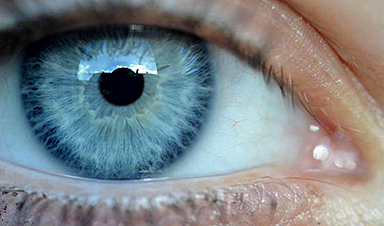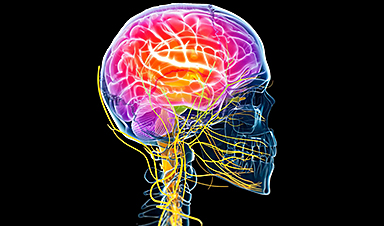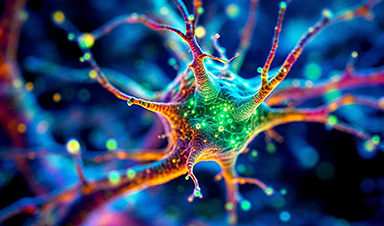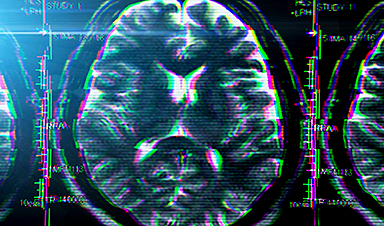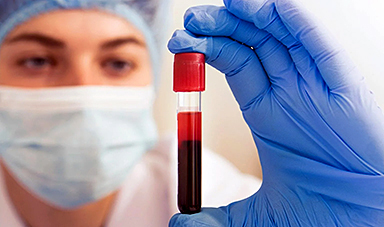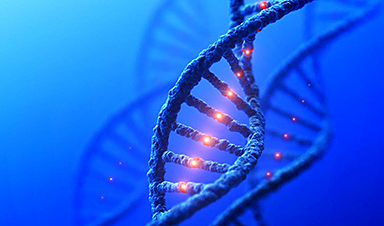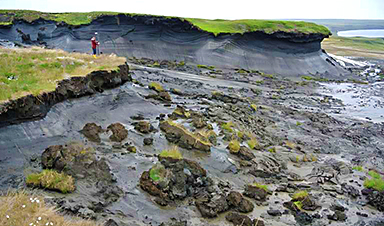Decisions on cancer treatment could become better tailored to individual patients with the adoption of a new imaging method being developed by University of Michigan researchers that maps the chemical makeup of a patient’s tumor.
Yet, the chemical environment of a tumor has a significant effect on how effective a particular treatment may be. For example, a low oxygen level in the tumor tissue impairs the effectiveness of radiation therapy.
Now, a team of scientists from the University of Michigan and two universities in Italy has demonstrated that an imaging system that uses special nanoparticles can provide a real-time, high-resolution chemical map that shows the distribution of chemicals of interest in a tumor.
It could lead to a way to help clinicians make better recommendations on cancer therapy tailored to a particular patient—precision medicine.
Their research, published in ACS Nano, reports on the first demonstration of an in vivo chemical imaging method generalizable to any chemical of interest, according to U-M chemistry professor Raoul Kopelman, one of the senior authors on the paper.
The researchers used a method for “chemical imaging” of tissues called photo-acoustic chemical imaging, or PACI.
“The novelty of this method is that it is performed in vivo, directly inside the body,” Kopelman said.
The team tested their system in mice that were implanted with tissue from a biopsy of a patient’s tumor, called a xenograft. Patient-derived xenografts recapitulate the genetic and biological characteristics of the patient’s tumor.
PACI employs nanoparticles that have been developed in the past decades, by Kopelman and others, that can be injected into the mouse to target the tumor and sense a particular chemical of biomedical interest, such as oxygen, sodium or potassium.
When this nanosensor is activated by infrared laser light that is able to penetrate into the tumor tissues, an ultrasound signal is generated that can be used to map the concentration and distribution of that particular chemical.
The PACI method could be used in a mouse xenograft to repeatedly follow the characteristics of a particular patient’s tumor to evaluate the chemical environment of the tumor over time.
“This would allow for optimization of treatment methods for a particular patient—precision medicine,” Kopelman said.
Kopelman and colleagues employed the PACI with a nanoparticle targeted to sense oxygen. Following radiation therapy of the tumor in the mouse, the researchers found a significant correlation between oxygen levels in each part of the tumor and how well radiation therapy destroyed tumor tissue—the lower the local oxygen in the tissue, the lower the local radiation therapy efficacy.
“We thus provide a simple, noninvasive, and inexpensive method to both predict the efficacy of radiation therapy for a given tumor and identify treatment-resistant regions within the tumor’s microenvironment,” Kopelman said.
“Such chemical mapping would help the clinical team prescribe a personalized, optimal treatment for a given patient’s tumor, based on the new diagnostics from the tumor xenograft’s chemical mapping.”
In this research, PACI has been employed in patient-derived xenografts. The ultimate goal would be the ability to make the chemical maps in patients directly.
That would be feasible, says Kopelman, with fiber optics that could be threaded through the patient’s venous system, as is done in cardiac procedures, to get near the tumor. The nanosensor could then be activated by the laser, but it requires nanosensors developed for each chemical of interest, and each nanosensor would need to be approved by the Food and Drug Administration.
News
Pupil size in sleep reveals how memories are processed
Cornell University researchers have found that the pupil is key to understanding how, and when, the brain forms strong, long-lasting memories. By studying mice equipped with brain electrodes and tiny eye-tracking cameras, the researchers [...]
Stanford’s Vaccine Breakthrough Boosts Flu Protection Like Never Before
Stanford Medicine researchers have developed a new method for influenza vaccination that encourages a robust immune response to all four common flu subtypes, potentially increasing the vaccine’s efficacy. In laboratory tests using human tonsil [...]
Water’s Worst Nightmare: The Rise of Superhydrophobic Materials
New materials with near-perfect water repellency offer potential for self-cleaning surfaces in cars and buildings. Scientists from Karlsruhe Institute of Technology (KIT) and the Indian Institute of Technology Guwahati (IITG) have developed a surface [...]
Japanese dentists test drug to help people with missing teeth regrow new ones
Japanese dentists are testing a groundbreaking drug that could enable people with missing teeth to grow new ones, reducing the need for dentures and implants, AFP recently reported. Katsu Takahashi, head of oral surgery at [...]
An AI system has reached human level on a test for ‘general intelligence’
A new artificial intelligence (AI) model has just achieved human-level results on a test designed to measure "general intelligence." On December 20, OpenAI's o3 system scored 85% on the ARC-AGI benchmark, well above the previous AI best [...]
According to Researchers, Your Breathing Patterns Could Hold the Key to Better Memory
Breathing synchronizes brain waves that support memory consolidation. A new study from Northwestern Medicine reports that, much like a conductor harmonizes various instruments in an orchestra to create a symphony, breathing synchronizes hippocampal brain waves to [...]
The Hidden Culprit Behind Alzheimer’s Revealed: Microglia Under the Microscope
Researchers at the CUNY Graduate Center have made a groundbreaking discovery in Alzheimer’s disease research, identifying a critical link between cellular stress in the brain and disease progression. Their study focuses on microglia, the brain’s immune [...]
“Mirror Bacteria” Warning: A New Kind of Life Could Pose a Global Threat
Mirror life, a concept involving synthetic organisms with reversed molecular structures, carries significant risks despite its potential for medical advancements. Experts warn that mirror bacteria could escape natural biological controls, potentially evolving to exploit [...]
Lingering Viral Fragments: The Hidden Cause of Long COVID
Long COVID, affecting 5-10% of COVID-19 patients, might be caused by the enduring presence of the virus in the body. Research suggests that viral fragments, possibly live, linger and lead to symptoms. Addressing this involves antiviral treatments, enhanced [...]
Hidden Scars: How COVID Lockdowns Altered Teen Brains Forever
Research from the University of Washington revealed that COVID-19 lockdowns led to accelerated cortical thinning in adolescents, impacting brain development significantly. This effect was more pronounced in females than males, raising concerns about long-term brain health. The study [...]
Simple Blood Test To Detect Dementia Before Symptoms Appear
UCLA researchers have identified placental growth factor (PlGF) as a potential blood biomarker for early detection of cognitive impairment and dementia. High PlGF levels correlate with increased vascular permeability, suggesting its role in the development [...]
Investing Goldman Sachs asks ‘Is curing patients a sustainable business model?’
Goldman Sachs analysts attempted to address a touchy subject for biotech companies, especially those involved in the pioneering “gene therapy” treatment: cures could be bad for business in the long run. “Is curing patients [...]
The risks of reversed chirality: Study highlights dangers of mirror organisms
A groundbreaking study evaluates the feasibility, risks, and ethical considerations of creating mirror bacteria with reversed chirality, highlighting potential threats to health and ecosystems. In a recent study published in Science, a team of researchers [...]
Alarming Mutation in H5N1 Virus Raises Pandemic Red Flags
NIH-funded study concludes that the risk of human infection remains low A recent study published in Science and funded by the National Institutes of Health (NIH) has found that a single alteration in a protein on the surface [...]
Scientists Discover Genetic Changes Linked to Autism, Schizophrenia
The Tbx1 gene influences brain volume and social behavior in autism and schizophrenia, with its deficiency linked to amygdala shrinkage and impaired social incentive evaluation. A study published in Molecular Psychiatry has linked changes in brain [...]
How much permafrost will melt this century, and where will its carbon go?
Among the many things global warming will be melting this century—sea ice, land glaciers and tourist businesses in seaside towns across the world—is permafrost. Lying underneath 15% of the northern hemisphere, permafrost consists of [...]

